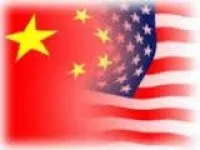
India to eclipse the US as China's biggest trading partner
OK it may take 30 years, but it's interesting that during Premier Wen’s December 2010 Indian visit, USD16bn of trade deals were signed, outstripping the USD10bn signed by President Obama during his November visit, reports HSBC.
Knowing that China, India and other emerging nations are growing quickly is not enough to understand fully the revolution taking place in world economic affairs. We are witnessing the creation of new economic and financial connections that will fundamentally change patterns of economic endeavour around the world.
Today, it’s the US but, in twenty or thirty years’ time, China’s biggest trading partner might be India. Brazil and Russia, in combination, will likely be threatening to overtake the US as important destinations for Chinese exporters.
And it’s not just China’s relations with its trading partners that will re-shape the global economy. The scope for India, Brazil and Russia to trade with each other is big enough to eclipse trading relations with the US and Europe. And what’s true of the BRICs is also true at the continental level: we believe linkages between Asia, Latin America and Africa are set to expand at an exponential rate.
As South-South trade picks up, so should South-South capital flows, undermining the US dollar’s reserve currency status and fostering the development of major new financial centres, notably in Asia.
Changes on this scale would be truly remarkable, taking us back hundreds of years to when world trade was centred not on Europe and North America but, instead, on Asia and Africa.
Yet, today, China, India, Brazil and Russia account for only a fraction of each other’s trade. So how can we make such claims with any degree of credibility?
Recent history provides part of the answer. In the 1950s and 1960s, rapid growth in what is now known as the developed world was not just a story about post-war reconstruction. Expansion was also, importantly, driven by the opening up of trade between nations. While the 1970s provided an awkward interruption, the 1980s and 1990s provided a second leg to the story, this time supported by the free flow of capital across borders. These “new connections” led to turbocharged growth in developed world trade.
The same patterns of turbocharged growth are now within reach for the emerging nations. To date, their growth has been unusually dependent on exports to the developed world. The western nations, however, are simply not growing fast enough to enable this model to be sustained. If the emerging nations are ever going to experience living standards approaching those now taken for granted in the developed world, they will increasingly have to trade with each other.
Here’s more statistics from HSBC:
- The number of Chinese tourists in Dubai increased 50% in 2009 and a further 50% in 2010.
- 42% of the workforce in the United Arab Emirates is from either India or Pakistan
- Sinopec’s USD7.1bn acquisition of a large stake in Repsol-YPF was the second-largest Brazilian
- M&A deal in 2010 while CNOOC’s USD3.1bn investment in Bridas Corp was Argentina’s largest M&A deal in 2010.
- In 2009, Korea secured a USD20bn deal with the Emirates to build nuclear power plants in the Gulf,its biggest ever export order.
- During Premier Wen’s December 2010 Indian visit, USD16bn of trade deals were signed,outstripping the USD10bn signed by President Obama during his November visit.
- ICBC’s 20% equity stake in Standard Bank represents the biggest FDI deal in South Africa since theend of apartheid in 1994.
- China is the largest foreign investor in Brazil, Laos, Myanmar, Iran, Mongolia and Afghanistan.
- China accounts for five of the world’s top ten biggest container ports: twenty years ago, not oneChinese port was in the top twenty.
- Riversdale, the Australian-listed company developing coalfields in Mozambique, is 8% owned by China’s Wuhan Iron and Steel, 22% owned by India’s Tata and 16% owned by Brazil’s CSN.
- Korean exports to the emerging world jumped from half to three-quarters of total exports over the last ten years.



![SBR 5 Lorem Ipsum News 2 [8 May]](https://cmg-qa.s3.ap-southeast-1.amazonaws.com/s3fs-public/styles/exclusive_featured_article/public/2025-05/a_hand_pointing_to_a_futuristic_technology_5b87c9d0e3_3.png.webp?itok=M3Hf-9XR)
![SBR 4 Lorem Ipsum [8 May Top Stories]](https://cmg-qa.s3.ap-southeast-1.amazonaws.com/s3fs-public/styles/exclusive_featured_article/public/2025-05/a_hand_pointing_to_a_futuristic_technology_5b87c9d0e3_2.png.webp?itok=2m5Wl0MX)


![Exclusive three SBR 12 Lorem Ipsum [8 May]](https://cmg-qa.s3.ap-southeast-1.amazonaws.com/s3fs-public/styles/exclusive_featured_article/public/2025-05/a_hand_pointing_to_a_futuristic_technology_5b87c9d0e3_11.png.webp?itok=8kn_UIfA)
![SBR 3 Lorem Ipsum [ Exclusive 2]](https://cmg-qa.s3.ap-southeast-1.amazonaws.com/s3fs-public/styles/exclusive_featured_article/public/2025-05/a_hand_pointing_to_a_futuristic_technology_5b87c9d0e3_1.png.webp?itok=YCyjLegJ)
![SBR 2 Lorem Ipsum [8 May]](https://cmg-qa.s3.ap-southeast-1.amazonaws.com/s3fs-public/styles/exclusive_featured_article/public/2025-05/a_hand_pointing_to_a_futuristic_technology_5b87c9d0e3_0.png.webp?itok=_cKD-29o)

![Video [Event News]](https://cmg-qa.s3.ap-southeast-1.amazonaws.com/s3fs-public/styles/event_news_featured_article/public/2025-05/screenshot-2025-05-08-at-4.58.53-pm_0.png.webp?itok=Kud35sMs)
![Event News SBR 9 Lorem Ipsum [8 may]](https://cmg-qa.s3.ap-southeast-1.amazonaws.com/s3fs-public/styles/event_news_thumbnail/public/2025-05/a_hand_pointing_to_a_futuristic_technology_5b87c9d0e3_8.png.webp?itok=DTh_dbYp)
![Event News SBR 9 Lorem Ipsum [8 May]](https://cmg-qa.s3.ap-southeast-1.amazonaws.com/s3fs-public/styles/event_news_thumbnail/public/2025-05/a_hand_pointing_to_a_futuristic_technology_5b87c9d0e3_7.png.webp?itok=vzDAzb6V)
![Event News SBR 8 Lorem Ipsum [8 May]](https://cmg-qa.s3.ap-southeast-1.amazonaws.com/s3fs-public/styles/event_news_thumbnail/public/2025-05/a_hand_pointing_to_a_futuristic_technology_5b87c9d0e3_6.png.webp?itok=jvHFc4P6)
![Video [Event News]](https://cmg-qa.s3.ap-southeast-1.amazonaws.com/s3fs-public/styles/video_thumbnail/public/2025-05/screenshot-2025-05-08-at-4.58.53-pm_0.png.webp?itok=yZnI0YBb)
![Video 1 SBR [8 May]](https://cmg-qa.s3.ap-southeast-1.amazonaws.com/s3fs-public/styles/video_thumbnail/public/2025-05/screenshot-2025-05-08-at-4.58.53-pm.png.webp?itok=9AAeRz_k)

 Advertise
Advertise

